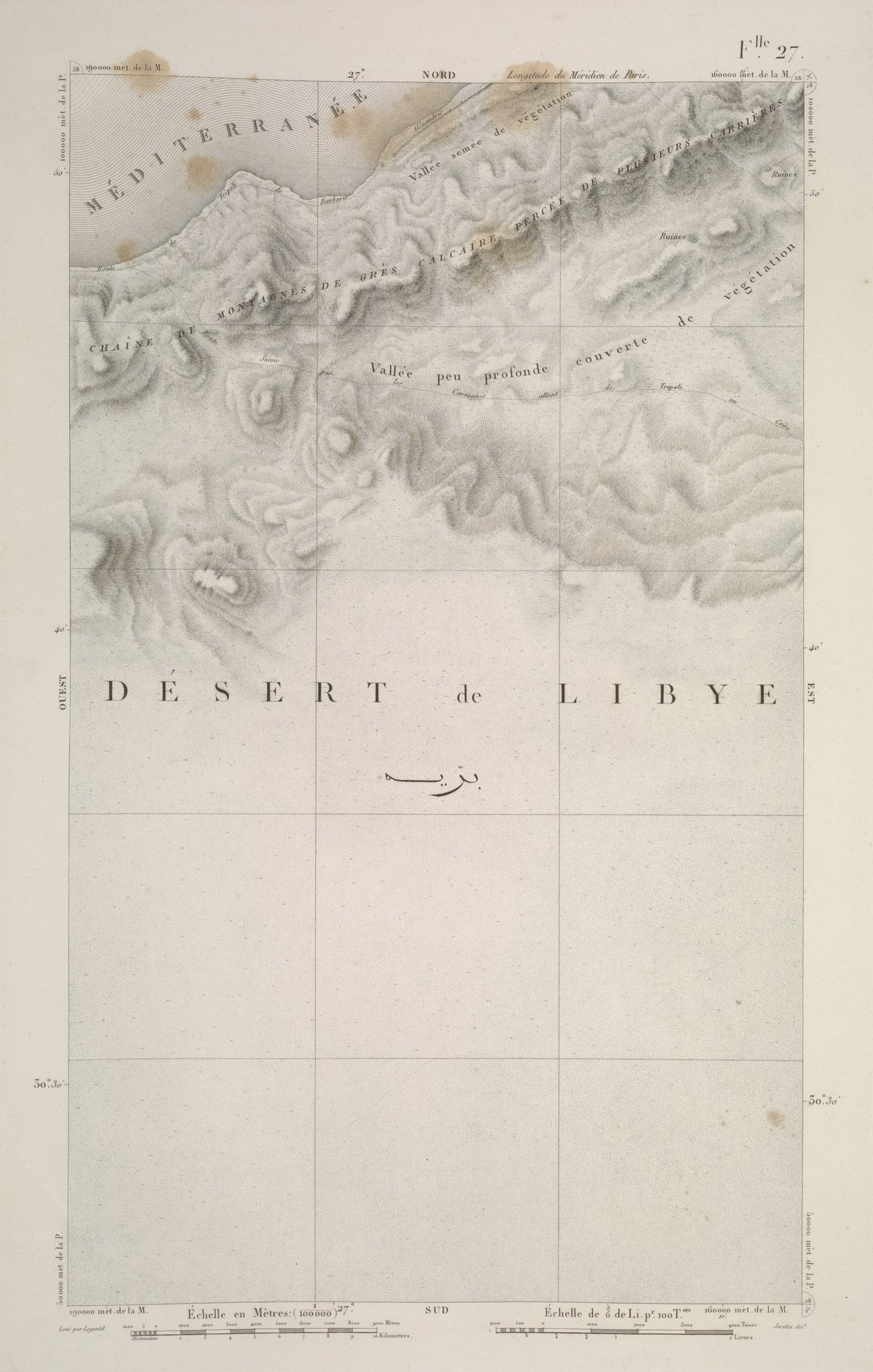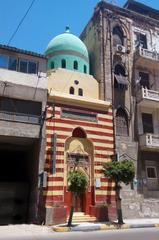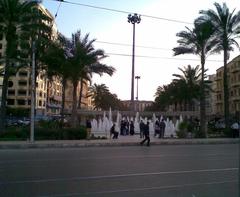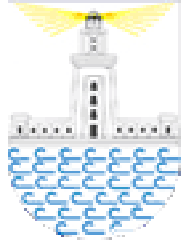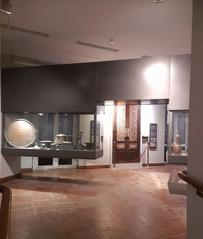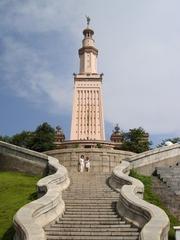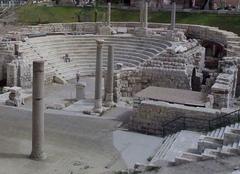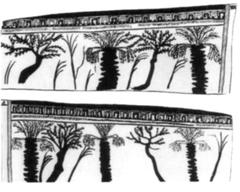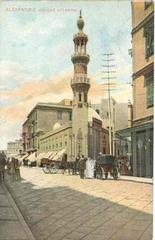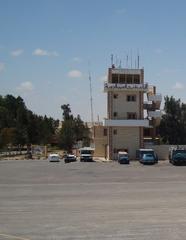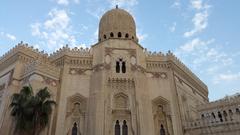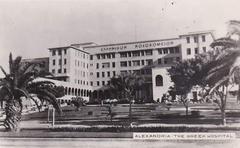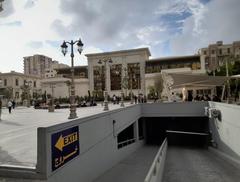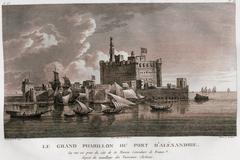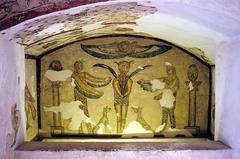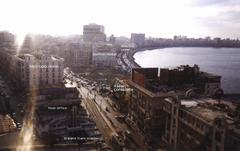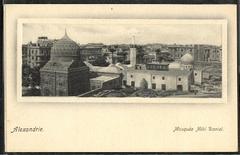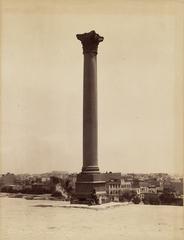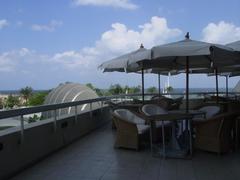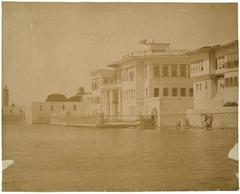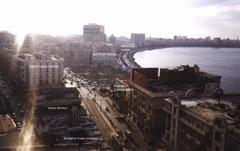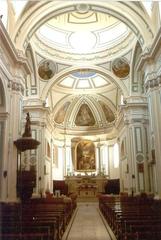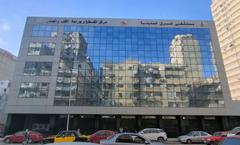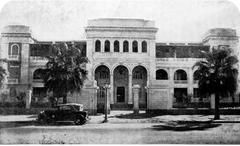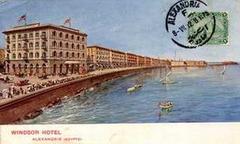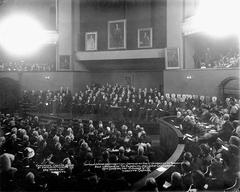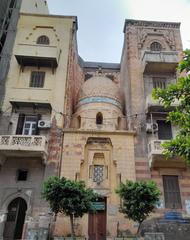Abu Mena, Alexandria, Egypt: A Visitatori’s Comprehensive Guide - History, Significance, Tickets, and Tips
Date: 14/06/2025
Introduction
Abu Mena, situated approximately 50 kilometers southwest of Alexandria, Egypt, stands as one of the most significant early Christian archaeological and pilgrimage sites in the Mediterranean region. Rooted in the veneration of Saint Menas, a 3rd-century martyr whose burial site evolved into a renowned sanctuary, Abu Mena flourished from the late 4th century through the 7th century CE as a vital spiritual and cultural center. Pilgrims from across Egypt, North Africa, and Europe journeyed here seeking healing and miracles, leaving behind a rich legacy manifested in extensive urban ruins, religious architecture, and artifacts such as the distinctive “Menas flasks.” Today, Abu Mena’s archaeological remains—including a grand basilica, baptistery, monastic complexes, and subterranean tombs—offer invaluable insights into early Christian art, monasticism, and pilgrimage traditions within Egypt.
Despite its historical prominence, Abu Mena faces ongoing conservation challenges, notably due to rising groundwater levels caused by modern agricultural practices, which threaten the site’s structural integrity. Since its inscription as a UNESCO World Heritage Site in 1979 and subsequent listing as a World Heritage Site in Danger in 2001, concerted efforts by Egyptian authorities and international organizations have aimed to mitigate deterioration through groundwater control, site management, and community engagement. Visitors today can explore Abu Mena within designated visiting hours, access guided tours that enrich understanding of its spiritual and architectural heritage, and combine their trip with other notable Alexandria historical sites, such as the Catacombs of Kom el Shoqafa and Pompey’s Pillar.
This comprehensive guide provides an in-depth look at Abu Mena’s historical significance, archaeological highlights, visitor logistics—including opening hours, ticketing, accessibility, and transportation—and conservation status. Whether you are a history enthusiast, religious pilgrim, or cultural traveler, this resource equips you to appreciate and responsibly experience one of Egypt’s most treasured Christian heritage sites.
Table of Contents
- Introduction
- Historical Overview
- Visitor Information
- Frequently Asked Questions (FAQ)
- Conclusion
- References
Historical Overview
Foundation and Origins
The story of Abu Mena begins with the veneration of Saint Menas (St. Mina), a Christian soldier who died as a martyr in 296 CE. Early Christian tradition holds that, after his martyrdom in Alexandria, Menas’s body was transported via camel to the western desert, stopping where the camel refused to proceed—a sign believed to be divinely ordained for his burial. This became the site of miraculous healings, drawing attention from across the Christian world.
Pilgrimage and Expansion
By the late 4th century, Abu Mena had developed into the preeminent Christian pilgrimage destination in Egypt. Pilgrims came to venerate the relics of Saint Menas and seek cures, commemorated by the distribution of terracotta “Menas flasks” that have been found throughout the Mediterranean. The site’s urban complex expanded with the construction of a grand basilica, baptistery, Roman baths, shops, hostels, and monastic buildings. The Basilica of St. Mena, notable for its mosaics and frescoes, exemplifies early Christian art and architecture.
Decline and Rediscovery
The site’s prominence waned after the Muslim conquest of Egypt in the 7th century. Successive invasions and the sacking of the site in the 10th century led to its abandonment and burial under desert sands. Rediscovered in the late 19th and early 20th centuries, successive archaeological excavations have uncovered basilicas, crypts, monastic quarters, and a wealth of artifacts revealing Abu Mena’s former vitality.
Modern Conservation Efforts
Abu Mena became a UNESCO World Heritage Site in 1979 for its outstanding significance. However, rising groundwater due to nearby agricultural irrigation has threatened the site’s stability, causing subsidence and damage to ancient structures. Emergency conservation measures include the addition of sand for stabilization, dewatering projects, and restricted access to fragile areas. Ongoing collaboration among Egyptian authorities, UNESCO, and the local community aims to balance preservation with sustainable tourism.
Visitor Information
Visiting Hours and Tickets
- Visiting Hours: The archaeological site is generally open daily from 8:00 AM to 4:00 PM. The modern St. Mina Monastery is open from 9:00 AM to 5:00 PM. Hours may vary for special events or during conservation work—check official sources before your visit.
- Tickets: Entry to the archaeological site is typically around 50–80 EGP (approximately US$3–5) for adults, with discounts for students, children, and Egyptian nationals. The St. Mina Monastery has a separate entrance fee of about 10 USD.
- Purchase: Tickets are available at the site entrance. Guided tour packages may include ticket costs.
Getting There
- By Car/Taxi: Abu Mena is about an hour’s drive from Alexandria. Private taxis are recommended; negotiate fares in advance (approx. US$20 one way).
- By Tour: Several operators in Alexandria and Cairo offer guided day trips that include transportation and expert commentary.
- Public Transport: There are limited public transport options; pre-arranged tours or private vehicles are most convenient.
Guided Tours and Facilities
- Guided Tours: Available through local agencies or the Coptic Orthodox Church, guided tours provide historical context and ensure visitor safety.
- Facilities: Restroom facilities and shaded rest areas are mainly available at the modern monastery. The archaeological site itself has minimal amenities. Bring water, snacks, and sun protection.
Accessibility and Visitor Tips
- Accessibility: The archaeological zone features uneven terrain and limited wheelchair access. Some improvements have been made at key locations.
- Dress Code: Modest attire is recommended, especially when visiting religious sites.
- Safety: Follow signage and avoid entering restricted or fragile areas for your safety and to support site preservation.
Photography and Best Spots
- Photography: Permitted outdoors, but flash and tripods may be restricted. Drone use requires special permission.
- Best Spots: The Basilica ruins, crypt of St. Menas, and monastic quarters offer excellent photo opportunities. Early morning light is ideal.
Nearby Attractions
- Alexandria: Combine your Abu Mena trip with visits to the Catacombs of Kom el Shoqafa, Pompey’s Pillar, the Bibliotheca Alexandrina, or the Citadel of Qaitbay to experience Alexandria’s rich tapestry of history.
Frequently Asked Questions (FAQ)
Q: Are Abu Mena visiting hours the same year-round? A: The site is usually open daily from 8:00 AM to 4:00 PM, but hours may vary for holidays or conservation work—always check ahead.
Q: How much are tickets to Abu Mena? A: Around 50–80 EGP (US$3–5) for the archaeological site, with discounts for students and children. The monastery charges a separate fee of about 10 USD.
Q: Is Abu Mena accessible by public transport? A: Public transport is limited; private taxis or organized tours are recommended.
Q: Are guided tours available? A: Yes, through local travel agencies or the Coptic Orthodox Church.
Q: Can I take photos at Abu Mena? A: Yes, but be mindful of restrictions in certain religious areas and always ask permission before photographing inside the monastery.
Q: Is the site suitable for children and elderly visitors? A: While fascinating for all ages, some terrain is rough; caution and sturdy footwear are advised.
Conclusion
Abu Mena is a testament to the endurance of early Christian faith and the vibrant cultural exchanges of the Mediterranean world. Despite significant conservation challenges—including environmental threats and limited infrastructure—ongoing preservation efforts offer hope for the site’s future. Visitors can experience the spiritual and historical richness of Abu Mena by planning ahead, respecting guidelines, and supporting sustainable tourism initiatives.
Combine your visit with other Alexandria historical sites for a comprehensive cultural journey. For the latest updates on visiting hours, ticketing, and conservation news, consult official resources and consider utilizing travel tools such as the Audiala app.
Plan your trip today and contribute to the preservation of Abu Mena—one of Egypt’s most remarkable World Heritage Sites.
References and Further Reading
- Industry Hit – Abu Mena Historical and Visitor Guide: https://www.historyhit.com/locations/abu-mena/
- UNESCO World Heritage Centre – Abu Mena: https://whc.unesco.org/en/list/90
- All About World Heritage – Abu Mena Site Overview: https://allaboutworldheritage.com/abu-mena/
- Egypt Tourism Portal – Abu Mena Official Page: https://egypt.travel/en/attractions/abu-mena
- SpringerLink – Conservation Efforts at Abu Mena: https://link.springer.com/chapter/10.1007/978-3-030-74482-3_18
- World Heritage Site Community – Visiting Abu Mena: https://www.worldheritagesite.org/list/Abu+Mena
- Chris Travel Blog – Visiting Abu Mena: https://www.christravelblog.com/egypt-an-alexandria-day-trip-from-cairo-with-a-visit-to-abu-mena/
- Trip101 – St. Mina Monastery Visitor Information: https://trip101.com/article/monasteries-in-egypt
- Traverve – Alexandria Historical Sites Guide: https://traverve.com/city/alexandria/category/unesco-top-sites/explore-alexandria-egypt-and-its-unesco-heritage-a-complete-travel-guide/7563
